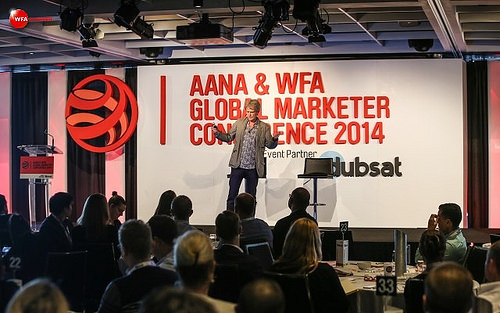How to set a global media and marketing budget
22/12/2011
Back to the overview
WFA members have provided an insight into their processes for setting a global media and marketing budget.
Ten companies, all within the top 50 biggest spenders globally and operating seven different categories have contributed to a survey on the process of setting budgets.
Forty per cent of those questioned expect marketing budgets to decrease in 2012 with 13% expecting media spending to fall. The majority verdict on both categories, however, was for budgets to stay the same.
They predict that numbers of marketing and media specialists they employ in their teams will stay the same but significantly nearly 40% expect to make new hires in their media departments.
Respondents used a variety of different strategies for setting budgets with an even split between central and local marketing teams being involved in the decision making process.
The majority of those questioned developed their budgets based on proposals for every brand (56%) but 44% base budgets on last year's figures (with 33% incorporating adaptations for new campaigns). Even those working off proposals per brand, however, will include cost estimates based on previous experience, however, making benchmarked costs an important part of the process.
Planning cycles are pretty short with nearly 90% of those questioned working less than six months in advance. The majority (56%) worked on 1-3 months in advance. The process typically takes more than six weeks and 44% take more than 10 weeks, a reflection of the complex brand portfolios of many multinationals.
The four most common metrics used for both budget setting and measuring performance are brand profitability, market/brand share, sales volume and volume growth. Companies with the longest planning cycles tend to use a widest range of metrics.
A detailed breakdown of marketing budgets from five global marketing organisations reveals that on average – although there is wide variation between individual companies – creation, production and post-production account for around 35%, media planning and buying take around 45% with proposition development, communication planning and versioning/adaptation responsible for the rest.
For more information on the results of the survey please contact Steve Lightfoot at [email protected] or visit the WFA's Global Knowledge Base.
Sign up to monthly WFA news
Ten companies, all within the top 50 biggest spenders globally and operating seven different categories have contributed to a survey on the process of setting budgets.
Forty per cent of those questioned expect marketing budgets to decrease in 2012 with 13% expecting media spending to fall. The majority verdict on both categories, however, was for budgets to stay the same.
They predict that numbers of marketing and media specialists they employ in their teams will stay the same but significantly nearly 40% expect to make new hires in their media departments.
Respondents used a variety of different strategies for setting budgets with an even split between central and local marketing teams being involved in the decision making process.
The majority of those questioned developed their budgets based on proposals for every brand (56%) but 44% base budgets on last year's figures (with 33% incorporating adaptations for new campaigns). Even those working off proposals per brand, however, will include cost estimates based on previous experience, however, making benchmarked costs an important part of the process.
Planning cycles are pretty short with nearly 90% of those questioned working less than six months in advance. The majority (56%) worked on 1-3 months in advance. The process typically takes more than six weeks and 44% take more than 10 weeks, a reflection of the complex brand portfolios of many multinationals.
The four most common metrics used for both budget setting and measuring performance are brand profitability, market/brand share, sales volume and volume growth. Companies with the longest planning cycles tend to use a widest range of metrics.
A detailed breakdown of marketing budgets from five global marketing organisations reveals that on average – although there is wide variation between individual companies – creation, production and post-production account for around 35%, media planning and buying take around 45% with proposition development, communication planning and versioning/adaptation responsible for the rest.
For more information on the results of the survey please contact Steve Lightfoot at [email protected] or visit the WFA's Global Knowledge Base.
Sign up to monthly WFA news














































































